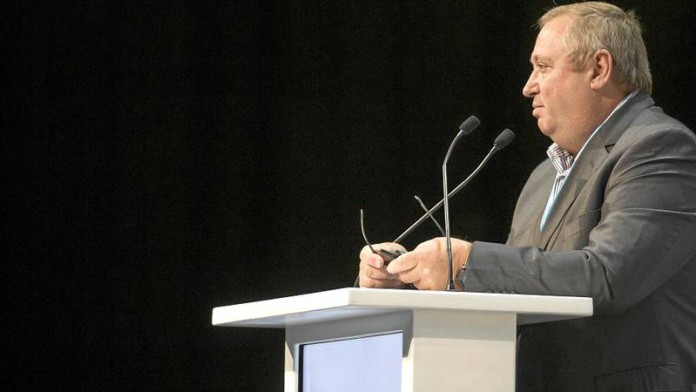
SIBANYE-Stillwater is considering raising up to $600m in additional funds and working capital in an effort to deleverage its balance sheet which it acknowledged was one of the reasons the firm’s share price had under-performed this year.
Commenting in a strategic and operating update, it added that it remained committed to the proposed merger with Lonmin, and that seismic activity at the Masakhane section of its Driefontein mine had resulted in damage leading to a reduction in gold output to date of about 286 kilograms or about 9,200 ounces.
“The board and management … has noted with concern the significant drop in the group’s share price and market value, which has accelerated in recent weeks,” it said, adding that the uncertainty was “unwarranted”. It believed it was: “… primarily driven by the concerns around high balance sheet leverage, the recent safety incidents and associated operational disruptions, and concerns regarding the viability of the Lonmin transaction”.
Shares in Sibanye-Stillwater have fallen just over a quarter in the last month, including a recent pick-up during the last two days, and down a more comprehensive 47% on a 12-month basis. Analysts, including Goldman Sachs, forecast earlier this month that the share would recover, but it has failed to do so until Wednesday.
The proposals to raise additional liquidity include a $500m streaming arrangement in which it will pre-sell precious metals. In addition, it would finance inventory of metal produced at its recycling operations at its Stillwater platinum group metal (PGM) operations in the US – a move that could release $100m in working capital, currently locked up.
This would be in addition to recent balance sheet restructuring in which the company during April upsized its dollar-denominated credit facility, nearly doubling it to $600m. This could be increased by a further $150m. It earlier refinanced a $350m revolver.
“A final decision regarding these financial options will be announced shortly,” the company said in its update. “The group has no intention to issue equity in order to reduce debt. Even under significantly more challenging circumstances, this remains an unlikely scenario.”
LONMIN
Speculation ahead and after Lonmin’s interim results presentation was that Sibanye-Stillwater may struggle to have the transaction approved by shareholders, and might not even submit it to them. This was based on its offer document in which it noted certain conditions precedent including Lonmin remain net cash.
Liberum Capital said earlier this month that “… if Lonmin is in the red before the deal closes, it is going to make hitting its targets even harder,” – a reference to Sibanye-Stillwater’s deleveraging plans. Lonmin subsequently reported a little over $60m in net cash – including a lock-up of inventory. Nonetheless, the fear took root that its position was becoming increasingly parlous, especially if regulatory clearance for the proposed merger with Sibanye-Stillwater was delayed.
Said Sibanye-Stillwater today: “We remain excited about the opportunity to close this transaction, which is compelling from a strategic and a value perspective”, adding that the Lonmin numbers were pretty much in line with its own expectations.
The group also sought to play down the effects of the deterioration in safety levels at its gold mining operations, west of Johannesburg. It had called a safety summit to address the problems – following seismicity and the death of seven employees – and would continue to press forward on the matter in line with Gwede Mantashe, mines minister’s, advice.
However, the economic impact was limited, it claimed.
The fatalities occurred at the Masakhane section of Driefontein mine which was suspended at the time following seismicity. There were also seismic events at the Kloof section, but these were described as normal geological events by the company. The impact on output was about 160 kilograms of gold, equal to 5,240 oz as of May 5.
However, damage to footwall infrastructure at Masakhane meant the section had to remain closed whilst repairs take place. As a consequence, there had been no production since the fatal accident which equated to an output loss of 289kg or some 9,200 oz. Masakhane’s production represents about 20% of Driefontein’s total daily output, and 7% of the daily gold output at Sibanye-Stillwater’s South African gold operations.











